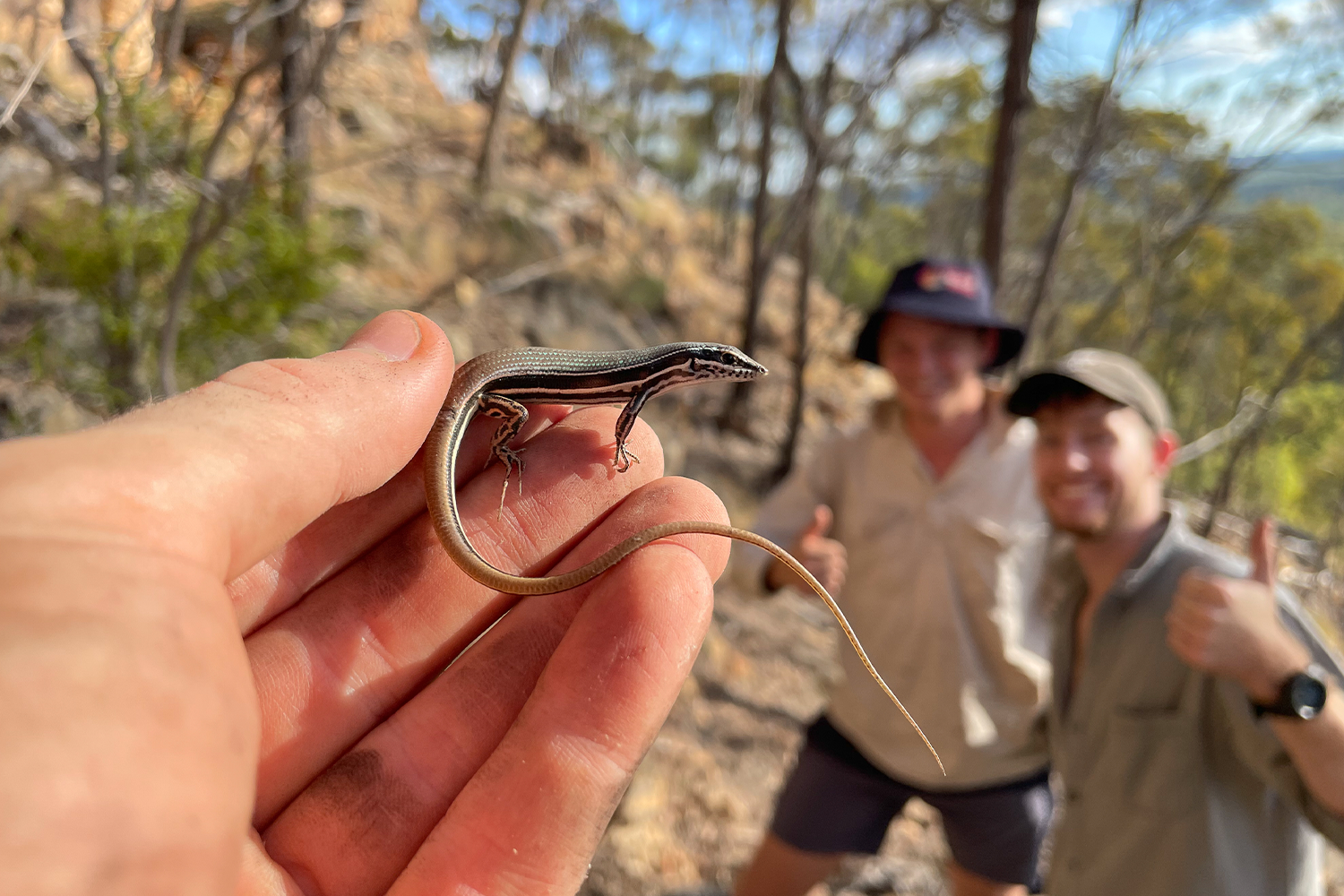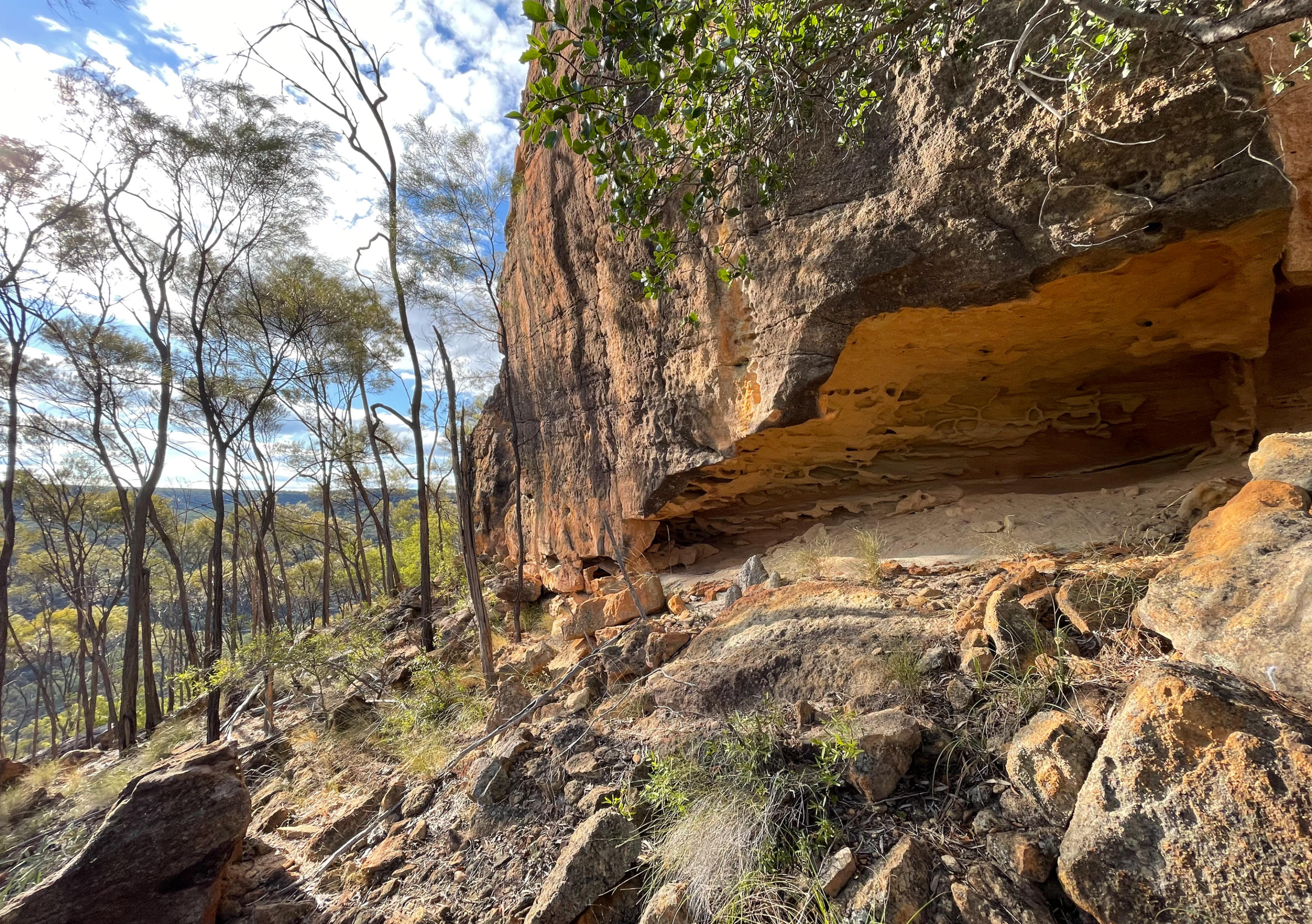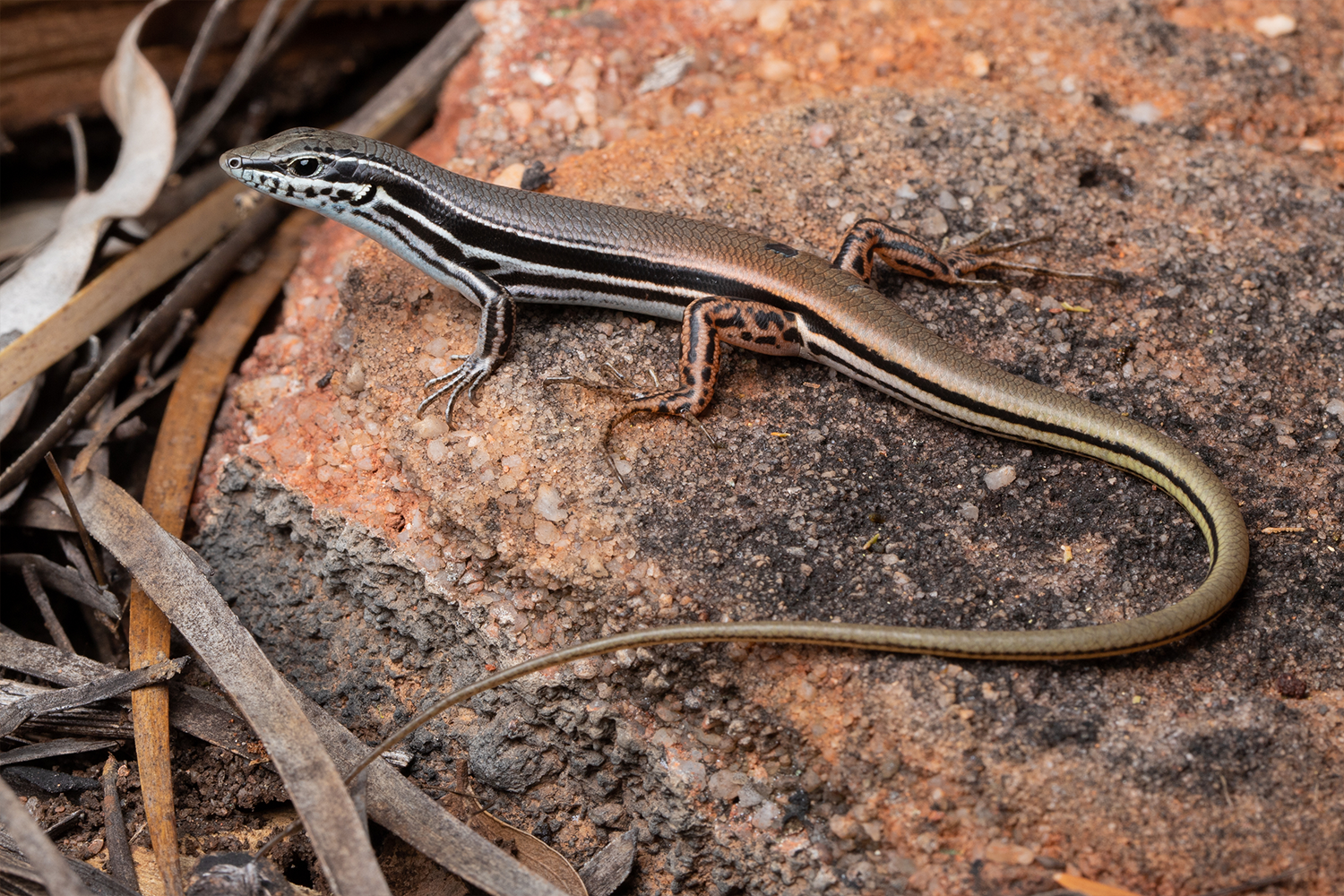
After 20 years of eluding capture, a mysterious population of fast-moving Australian reptiles has been identified as a new species. Now experts suggest that the rocky sandstone habitat where the lizard was found may be home to previously undescribed animals.
small skin Ctenotus rungulla, first observed at the turn of the century. But ecologists could not see it properly, so they thought it was another type of lizard known to science.
“They’re really fast, they’re really hard to catch. People have seen them over and over, but everyone immediately calls them a different species. Ctenotus brevipes, because they are so similar in size, their color patterns are very similar,” biologist Dr. Steven Zozaia told Yahoo News.
Zozaia, now a post-doctoral fellow at the Australian National University, visited the Gregory Mountains in Queensland around 2015 but failed to capture it either.
“I didn’t even realize they were mysterious. I just thought, it’s weird, I couldn’t catch them, and then I stopped thinking about them,” he said.
Contacted: A rare skin that has not been seen for 40 years has been rediscovered hiding under long grass

Photo ‘Ignite’ Mission To Depict Mysterious Lizard
But two years later, his colleague Dylan Case made a breakthrough — he captured a series of high-resolution images that revealed the lizard’s features in great detail, fueling their mission to learn more.
“It was immediately clear that it wasn’t what people thought,” Zozaia said
Unlike Ctenotus brevipes, the lizard in the photos had comb-like leaves at the opening of its ears.
“Seed Ctenotus comb means ear, as this is characteristic of most skins. but the Ctenotus brevipes out of almost 100 species, it was the only one without ears at all,” said Zozaya.

Excited by the photos, Case returned to Gregory Ridge and captured one. And the DNA sequencing carried out by Zozaia showed that it was “completely new” and not even closely related to DNA. Ctenotus brevipes.
The findings were published in the Australian Journal of Taxonomy by Zozaia, Case and Professor Conrad Hoskin.
“I’ve never discovered this species. Ecologist Keith MacDonald is the first person we know of who saw these things and thought they might be new,” said Zozaia, lead author of the paper.
“It was really a risky team effort by a group of people who had been seeing a strange lizard there for over 20 years. Then everything was the same and we were able to describe it.”
More discoveries from our natural world
New species are identified in the hotbed of rocky biodiversity
The Gregory Range, where the lizard was found, is part of the Great Dividing Range, the fifth longest land range in the world.
Zozaia focused her research on the Gulf Plains bioregion and the Einaslei Mountains, which she described as “relatively understudied.”
“The landscape where the skink lives is amazing, you’ve got a pile of sandstone plateaus. It’s a really wild-looking place that wasn’t explored until the last decade,” he said.
“But later some of us spent time there and started finding strange things. Ctenotus rungulla The fourth species we identified is endemic or nearly endemic to the range.
“It’s an amazing habitat for reptiles. And we’ve found a lot more in this area that we’re trying to describe now.”
Love Australia’s weird and wonderful environment? Our take new bulletin Show the best stories of the week.

#20yearold #mystery #solved #capture #species #fastmoving #reptile